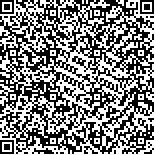| 本文已被:浏览 245次 下载 171次 |

码上扫一扫! |
|
|
| 疲劳载荷下单向陶瓷基复合材料界面摩擦力识别 |
|
韩笑1,2,高希光1,2,史剑3,宋迎东1,2,4,张盛1,2,于国强1,2
|
|
1.南京航空航天大学 能源与动力学院 航空发动机热环境与热结构工业和信息化部重点实验室, 江苏 南京 210016;2.南京航空航天大学 能源与动力学院 江苏省航空动力系统重点实验室,江苏 南京 210016;3.中国航发四川燃气涡轮研究院,四川 成都 610000;4.南京航空航天大学 机械结构力学及控制国家重点实验室,江苏 南京 210016
|
|
| 摘要: |
| 为了确定疲劳加载过程中不同循环数下界面摩擦力的大小,对单向陶瓷基复合材料(CMCs)的疲劳迟滞行为进行了研究,提出了单向CMCs疲劳载荷下界面摩擦力识别方法。基于剪滞模型,确定了疲劳峰值和谷值应力下纤维应力分布。并基于数形结合的方法推导了迟滞环割线模量的理论值与界面摩擦力之间的函数关系。将迟滞环割线模量的实验值与理论值进行比较,识别了不同循环数下界面摩擦力的大小。结果表明,在前1000个循环内,界面摩擦力从9.89MPa 减小为5.28MPa,并在随后的循环内近似不变,说明疲劳过程中界面磨损主要发生在前1000个循环内。此外,本文识别的界面摩擦力大小符合文献中CMCs的典型值(0.2~25MPa),且识别出的界面摩擦力随循环数变化规律与Evans经典界面摩擦力退化公式一致,说明基于本文方法的界面摩擦力识别结果是可信的。 |
| 关键词: 单向陶瓷基复合材料 疲劳载荷 界面摩擦力 数形结合 参数识别 |
| DOI:10.13675/j.cnki.tjjs.200150 |
| 分类号:TB332 |
| 基金项目:江苏省研究生科研与实践创新计划(KYCX19_0184)。 |
|
| Identification of Interface Shear Stress of Unidirectional Ceramic Matrix Composites under Fatigue Loading |
|
HAN Xiao1,2, GAO Xi-guang1,2, SHI Jian3, SONG Ying-dong1,2,4, ZHANG Sheng1,2, YU Guo-qiang1,2
|
|
1.Key Laboratory of Aero-Engine Thermal Environment and Structure,Ministry of Industry and Information Technology, College of Energy and Power Engineering,Nanjing University of Aeronautics and Astronautics,Nanjing 210016,China;2.Jiangsu Province Key Laboratory of Aerospace Power System,College of Energy and Power Engineering, Nanjing University of Aeronautics and Astronautics,Nanjing 210016,China;3.AECC Sichuan Gas Turbine Establishment,Chengdu 610000,China;4.State Key Laboratory of Mechanics and Control Mechanical Structures,Nanjing University of Aeronautics and Astronautics,Nanjing 210016,China
|
| Abstract: |
| In order to determinate the interfacial shear stress corresponding to different cycles under fatigue loading, the fatigue hysteresis behavior of unidirectional ceramic matrix composites (UD-CMCs) was studied, and identification method of interfacial shear stress of UD-CMCs under fatigue loading was proposed. The fiber stress under maximum and minimum fatigue stress was determined based on the shear-lag model. The relationship between the secant modulus of hysteresis loop and interfacial shear stress was established with the method of symbolic-graphic combination. By comparing the theoretical values of secant modulus of hysteresis loop with the experimental results, the interfacial shear stress under different cycles was estimated. The results show that the interface shear stress diminishes rapidly from 9.89MPa to 5.28MPa within the first 1000 cycles, and reaches an approximate stable value in subsequent cycles, which shows that the interface wear mainly occurs within the first 1000 cycles. In addition, the interfacial shear stress identified in this paper accords with the typical value of CMCs referred to the literatures (0.5~20MPa), and the variation of interfacial shear stress with the number of cycles is consistent with Evans’ classical interfacial shear degradation formula, which shows that the identified results of interfacial shear stress under different cycles by the present method are reliable. |
| Key words: Unidirectional ceramic matrix composites Fatigue loading Interface shear stress Symbolic-graphic combination Parameters identification |